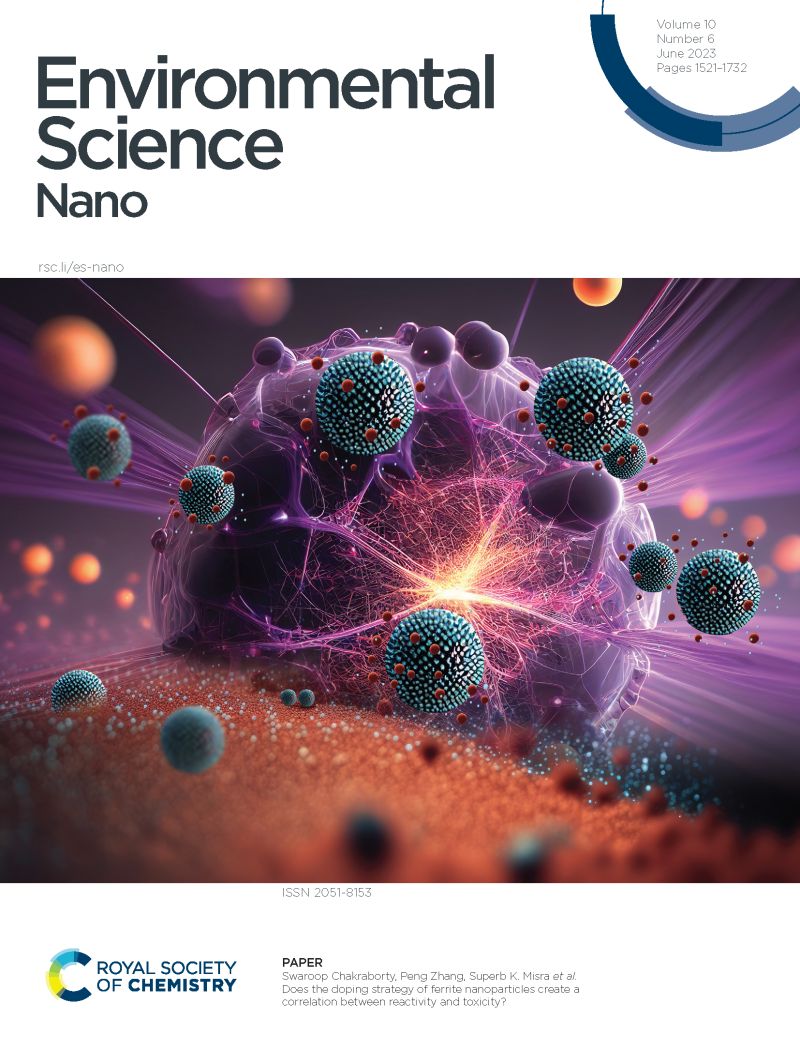Interactive toxicity of non-/biodegradable NPs and butyl methoxydibenzoyl methane on intestinal health and metabolism of zebrafish
IF 5.1
2区 环境科学与生态学
Q1 CHEMISTRY, MULTIDISCIPLINARY
引用次数: 0
Abstract
Biodegradable plastics have been widely used to reduce pollution from conventional plastics, but the harsh conditions of their degradation make them equally capable of generating nanoplastics (NPs) pollution and producing interactive ecotoxicity by coexisting with various pollutants. In this paper, the interactive toxicity of polystyrene (PS)-NPs and polylactic acid (PLA)-NPs with the typical Organic UV filters butyl methoxydibenzoyl methane (BM-DBM) on the intestinal health and metabolism of zebrafish (Danio rerio) was investigated at the tissue and molecular levels using wild AB zebrafish as a model organism. The results showed that both NPs and BM-DBM exposure alone or in combination induced different degrees of inflammatory symptoms in the zebrafish intestine, where PS and PS+B exposure groups also induced an imbalance of the zebrafish intestinal flora, causing a more severe intestinal inflammatory response than PLA and PLA+B. PS and PS+B also induced more metabolic pathways or differential metabolite alterations than PLA and PLA+B, respectively. The results of liver-related factor response showed that all exposure groups except PLA alone induced oxidative stress in liver tissue, and hepatic metabolic factors were also interfered with to varying degrees, with more severe organismal metabolic abnormalities induced in the PS and PS+B groups. The above reflected the liver friendliness of PLA, while highlighting the risk of hepatotoxicity of PS. Pearson correlation analysis proved that abnormal changes in metabolites such as lipids and lipid-like molecules due to changes in intestinal flora are most likely an important mechanism and cause of the abnormal response of intestinal and hepatic molecular indicators. We hope that our study will provide a basis for the ecological risk assessment of non-/biodegradable NPs and provide data support for the promotion of biodegradable plastics.非/可生物降解NPs和丁基甲氧基二苯甲酰甲烷对斑马鱼肠道健康和代谢的交互毒性
生物可降解塑料已被广泛用于减少传统塑料的污染,但其降解的恶劣条件使其同样能够产生纳米塑料(NPs)污染,并通过与各种污染物共存产生相互作用的生态毒性。本文以野生AB型斑马鱼为模型生物,在组织和分子水平上研究了聚苯乙烯(PS)-NPs和聚乳酸(PLA)-NPs与典型有机紫外滤光剂丁基甲氧基二苯甲酰甲烷(BM-DBM)对斑马鱼肠道健康和代谢的交互毒性。结果表明,NPs和BM-DBM单独或联合暴露均可引起斑马鱼肠道不同程度的炎症症状,其中PS和PS+B暴露组也可引起斑马鱼肠道菌群失衡,引起的肠道炎症反应比PLA和PLA+B更严重。PS和PS+B也分别比PLA和PLA+B诱导更多的代谢途径或差异代谢物改变。肝脏相关因子反应结果显示,除PLA单独暴露组外,其余暴露组均引起肝组织氧化应激,肝脏代谢因子也受到不同程度的干扰,其中PS组和PS+B组引起的机体代谢异常更为严重。以上反映了PLA对肝脏的友好性,同时也凸显了PS的肝毒性风险。Pearson相关分析证明,肠道菌群变化导致的脂类及类脂分子等代谢物的异常变化,很可能是导致肠道及肝脏分子指标异常反应的重要机制和原因。我们希望本研究能为非/生物降解NPs的生态风险评估提供依据,并为生物降解塑料的推广提供数据支持。
本文章由计算机程序翻译,如有差异,请以英文原文为准。
求助全文
约1分钟内获得全文
求助全文
来源期刊

Environmental Science: Nano
CHEMISTRY, MULTIDISCIPLINARY-ENVIRONMENTAL SCIENCES
CiteScore
12.20
自引率
5.50%
发文量
290
审稿时长
2.1 months
期刊介绍:
Environmental Science: Nano serves as a comprehensive and high-impact peer-reviewed source of information on the design and demonstration of engineered nanomaterials for environment-based applications. It also covers the interactions between engineered, natural, and incidental nanomaterials with biological and environmental systems. This scope includes, but is not limited to, the following topic areas:
Novel nanomaterial-based applications for water, air, soil, food, and energy sustainability
Nanomaterial interactions with biological systems and nanotoxicology
Environmental fate, reactivity, and transformations of nanoscale materials
Nanoscale processes in the environment
Sustainable nanotechnology including rational nanomaterial design, life cycle assessment, risk/benefit analysis
 求助内容:
求助内容: 应助结果提醒方式:
应助结果提醒方式:


